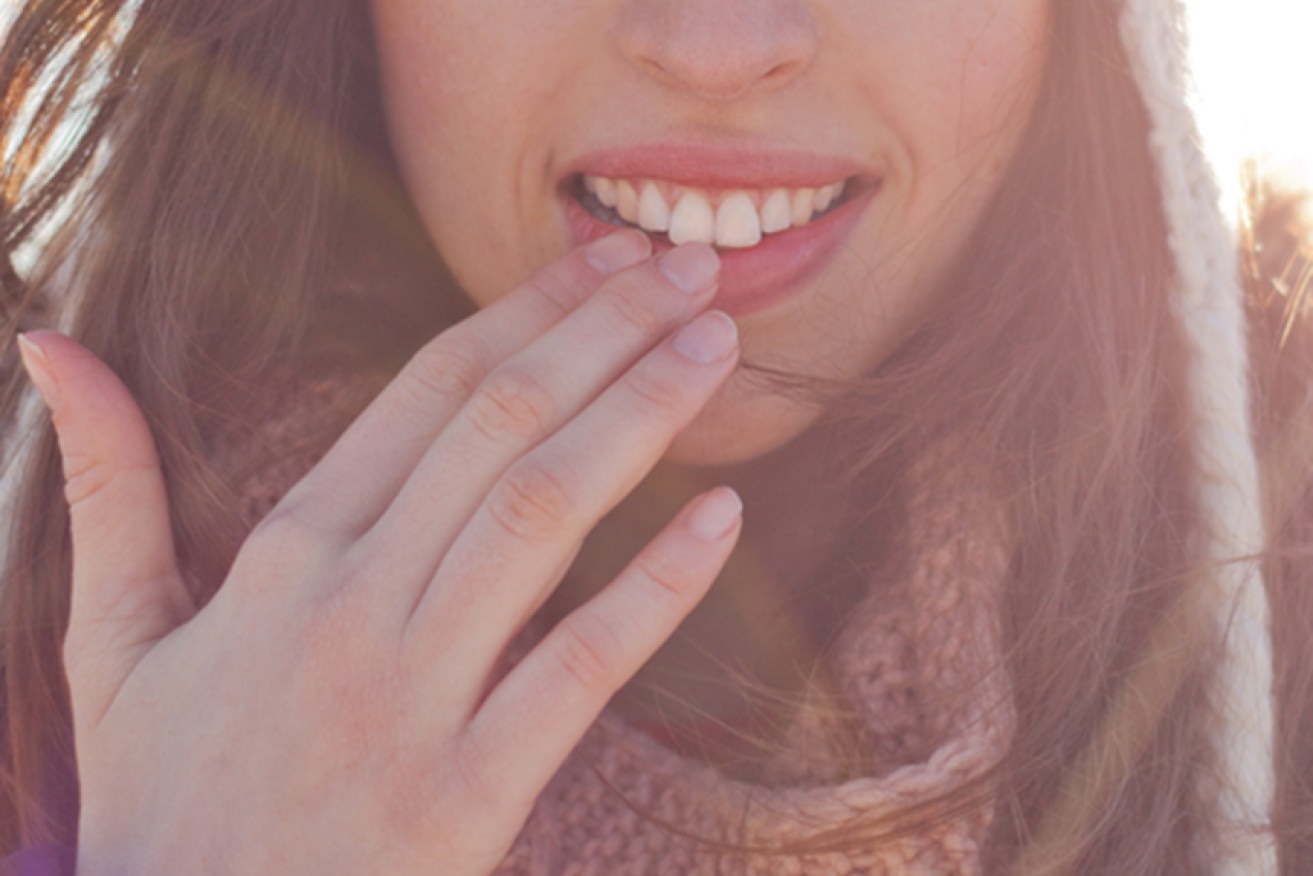The story behind the Lucas’ Papaw empire

In a clinically-clean factory in suburban Brisbane, workers in white coats, hair nets and plastic gloves are peeling and slicing hundreds of papaws every day to produce one of Australia’s most ubiquitous products.
Lucas’ Papaw Ointment might not be up there with the heavyweights of the pharmaceutical industry but few others have contributed for so long to the nation’s personal health and well-being.
• Sorry cabbies, it’s your own fault: expert, punters
• Apple unveils a hybrid that Steve Jobs would hate
• The best reactions to Murdoch buying National Geographic
Since it was created more than a century ago, there’s hardly an Aussie handbag, backpack or bathroom that hasn’t contained the distinctive red tube or jar of the iconic ointment.
With its cult-like following and countless online endorsements from devotees, there’s seemingly little the ointment can’t cure nor calm down.
Over-enthusiastic testimony aside, Lucas’ Papaw Ointment is a proven remedy for dry and cracked skin, chapped lips, minor burns, rashes, cuts, insect stings, pimples, tinea and the temporary relief of dermatitis and eczema.
Despite being essentially a healing product, the ointment has also been embraced in the cosmetics world as a lip gloss or balm.
Celebrities such as super model Kate Moss and Hollywood actresses Natalie Portman and Naomi Watts are loyal users. “Dry skin is the worst, and I hate having dry lips so I always keep my Lucas’ Papaw Ointment handy,” Aussie star Cate Blanchett told Elle UK magazine.
Lynette Swinglehurst, manager of Lucas Papaw Remedies, told The New Daily that nearly everyone who used Lucas’ Papaw Ointment had a story to tell of how well it worked.
“We are honoured to have become a household name and a staple item in many medicine cabinets across Australia and indeed around the world,” she said.

Cate Blanchett swears by Lucas’ ointment. Photo: Getty
A 25g tube of Lucas’ Papaw Ointment sells for about $5 and for most people this amount can last many weeks or even months.
Like a lot of great products, its composition is simple – 39mg/g of fresh fermented papaw, pharmaceutical grade petroleum jelly and wax as a base, potassium sorbate as a preservative, and a minute amount of Balsam of Peru for perfume.
Based in the southern Brisbane suburb of Acacia Ridge, Lucas’ Papaw Remedies is an Australian-owned family company operated by six direct descendants of Dr Thomas Pennington Lucas, who founded the business in 1911.
The company today employs about 44 people and produces about four million tubes and jars of Lucas’ Papaw Ointment every year. The product is sold throughout Australia and in about half a dozen other countries including New Zealand, Hong Kong, Singapore, Malaysia, and Taiwan.
The pervasive presence of Lucas’ Papaw Ointment in our everyday lives was shown at the recent Melbourne International Comedy Festival when comedian Lawrence Mooney asked women in the audience how many had a tube of the ointment in their handbag. Pretty much every woman raised her hand, prompting Mooney to quip: “I’ve never seen a single ad for this stuff but it’s in every woman’s handbag across Australia.”
So how has a small Brisbane company that hardly ever advertises its product achieved a customer reach that would be the envy of any major corporation?
Ms Swinglehurst, the great, great, granddaughter of Dr Lucas, said Lucas’ Papaw Ointment had proven safe and effective for more than 105 years.

The ointment comes in tubes and tubs.
“We do little, if any, actual marketing,” she said. “We are tremendously lucky in that the product is so effective that people recognise the quality and recommend it to their friends and family.
“To be honest we spend all our time working on making Lucas’ Papaw Ointment the very best it can be and we struggle most of the time to make our ointment fast enough to meet demand.
“So, strange at it may seem, we haven’t been involved in coming up with marketing strategies. We aren’t particularly media savvy. We are pretty old fashioned to be honest.
“We have a basic website and aren’t really active on Facebook although we’ve just stepped into the 21st Century and finally created a Lucas’ Papaw Remedies page. There had been many pages created by fans before that. In fact, I counted at least 57 before we decided to make our own!”
Scottish-born Dr Lucas, who died at the age of 74 in 1917, has been described as “an eccentric Queensland writer, scientist, inventor, medical doctor and utopian dreamer.”

Employees at the factory hard at work peeling papaws.
He migrated to Australia in 1876, seeking a warmer climate in which to recover from tuberculosis. After first practising in Melbourne, he moved to Brisbane 10 years later where he pursued a long-held passion to find a natural remedy for disease. In the 1890s and early 1900s, he studied thousands of botanical specimens and was particularly impressed by the papaw, describing the Mexican fruit as “the world’s greatest healing agent” .
From there Lucas’ Papaw Ointment emerged and Dr Lucas went on to establish a special hospital in Brisbane where he treated patients solely with his papaw remedies. A trademark image of the Vera Papaw Hospital appears on every tube and jar of the ointment.
In a biography published by the Royal Historical Society of Queensland, historian and researcher Dr Bill Metcalf notes that Dr Lucas was scathing in his condemnation of the medical profession of the day, viewing many doctors as unscientific and inclined to use surgery rather than natural remedies and prayer.
“He saw the medical establishment as being blind to the wisdom of his discoveries, particularly the efficacy of papaw ointments,” he said.

The humble papaw has provided the basis for one of Australia’s most popular beauty products. Photo: Shutterstock
Ms Swinglehurst said the formula for Lucas’ Papaw Ointment remained the same as when her great, great, grandfather created it – and, of course, was a closely-guarded family secret.
“Papaw is a natural antiseptic and healing product,” she said. “We use fresh fermented papaw as our active ingredient which concentrates the enzymes for better effect.
“We are the only company to create this amazing active ingredient in Australia – and perhaps the world. We do not have to rely on externally-produced powdered papaw extract.”
Ms Swinglehurst strongly rejected recent social media criticism that questioned the use of petroleum jelly in Lucas’ Papaw Ointment.
She said the high-quality pharmaceutical grade petroleum jelly used in the ointment did not block pores, nor was it carcinogenic or toxic. In fact, petroleum jelly by itself aided healing by protecting wounds and sealing out germs.
Ms Swinglehurst said Lucas’ Papaw Ointment met all purity and safety standards and was listed by the Therapeutic Goods Administration which regulates all medicines in Australia.
“We are listed as a pharmaceutical with the TGA rather than a cosmetic. The standards for safety and effectiveness for a pharmaceutical are much higher than a cosmetic,” she said.
“Lucas’ Papaw Ointment is a healing ointment. We are not focussed on the beauty industry. We are very proud of the benefits of our products, of the healing nature of what we do and our ability to help people of all ages in their everyday lives.”









